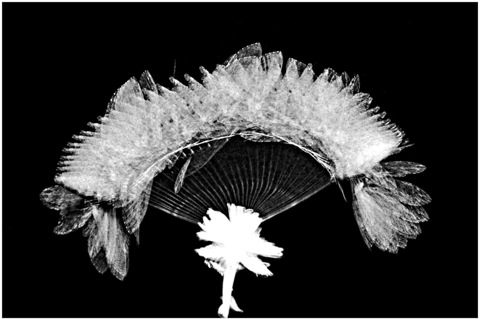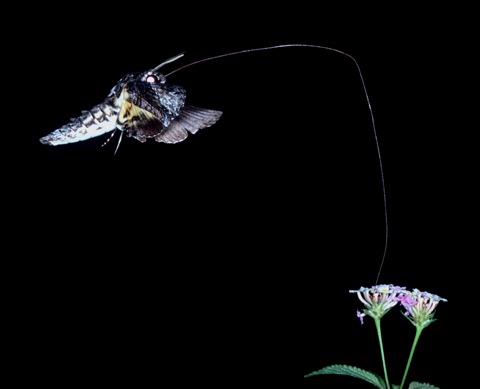Wasserthal, L.T. (1993): Swing-hovering combined with long tongue in hawkmoths, an antipredator adaptation during flower visits. In: Animal-Plant Interactions in Tropical Environments. (ed.by Barthlott et al.) Bonn 1992, pp. 77-87.
Since Darwin (1862) the extremely long tongues of tropical hawkmoths have been interpreted to be the result of a coevolutionary race between long nectar tubes of flowers and long tongues of pollinating hawkmoths. However extremely long-tongued hawkmoths are generalist feeders not depending on highly specialized sphingophilous flowers. Most long-tongued hawkmoths from the Palaeo- and Neotropics exhibit a swing-hovering flight during flower visits, which is interpreted to having evolved against being captured by predators like huntsman spiders. While the long tongue allows to keep distance from the flower thus being out of reach of a predator lying in ambush. As hunting spiders were already present when the moths appeared on the evolutionary scene, it is suggested that the long tongues and the corresponding flight evolved as predator avoiding adaptations.
Agrius convolvuli swings from left to right during nectar exploitation from an composite inflorescence avoiding to be targeted by predators like jumping spiders .
Coelonia solani, one of the extremely long-tongued hawkmoths swings around the vertical axis of its tongue, keeping distance from the inflorescence of Lantana camara.

